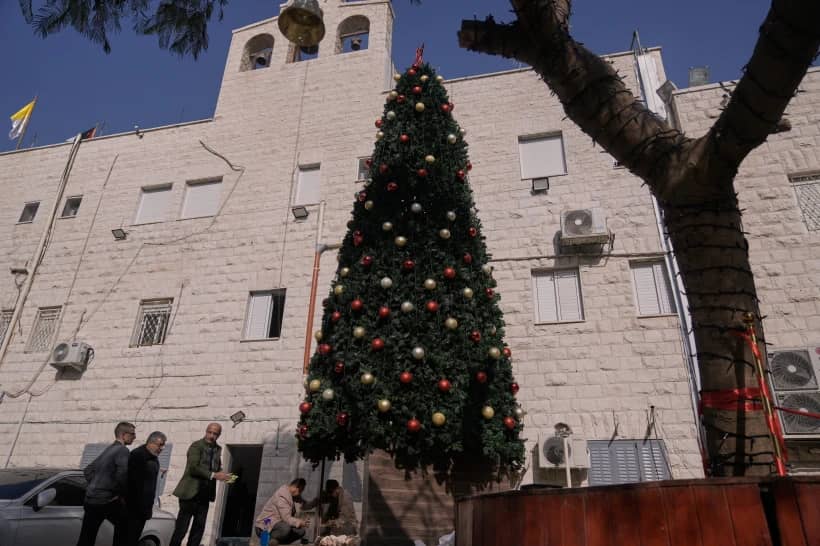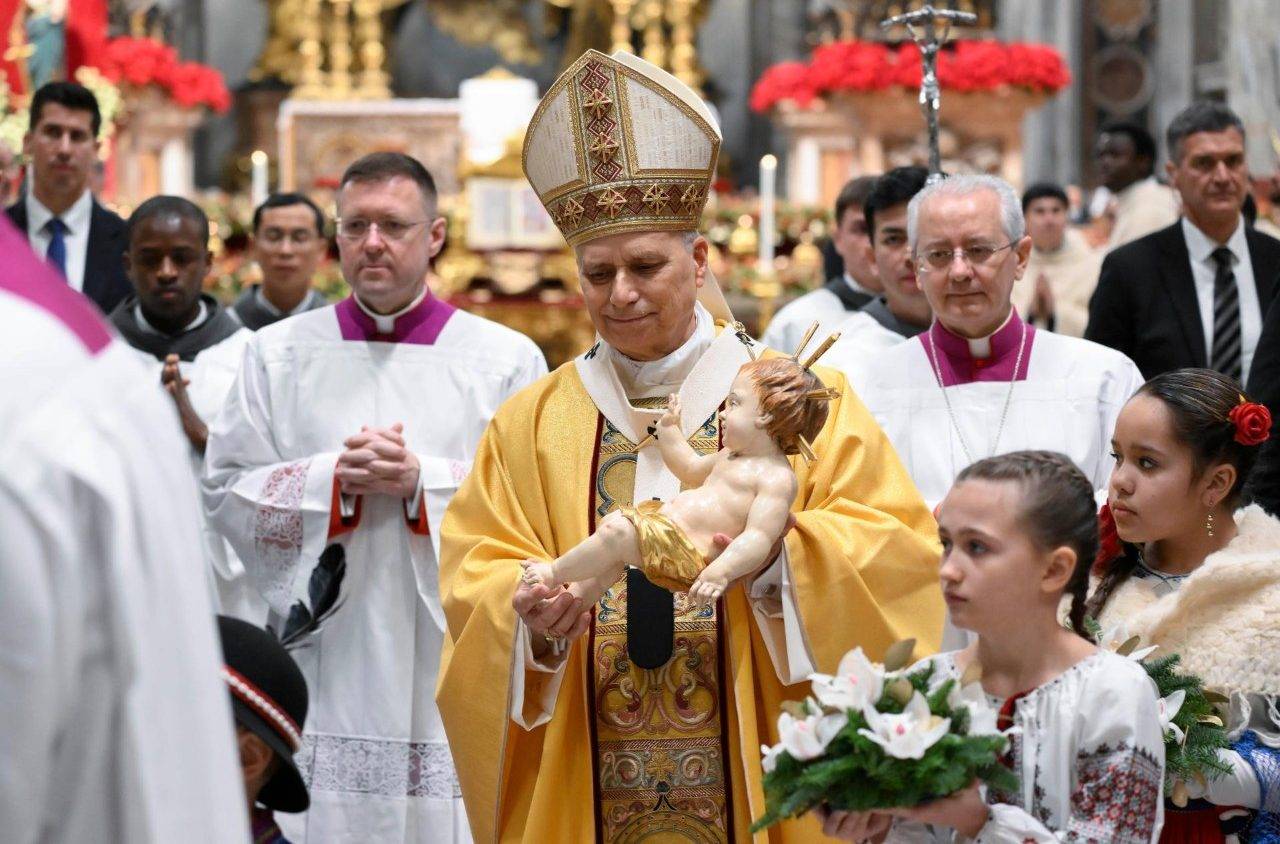[On Sunday, Oct. 9, Pope Francis announced a consistory on Nov. 19 for the creation of 17 new cardinals, including 13 under the age of 80 and therefore eligible to vote for the next pope. Crux is offering a series of profiles of the new cardinals.]
ROME—Pope Francis’s choice of Archbishop Carlos Aguiar Retes of Mexico as a cardinal is yet more proof that Latin America is shaping up to go in the same direction as the rest of the Catholic Church, but it is equally a sign of continuity with his predecessor, Benedict XVI.
Made archbishop of Tlalnepantla, just north of Mexico City, by Benedict in 2009, and ordained a bishop by St. John Paul II back in 1997, Aguiar Retes has long been a key figure in the Episcopal Conference of Latin America and the Caribbean, known as CELAM.
As vice-president of CELAM from 2003 to 2007, Aguiar Retes worked closely with Jorge Mario Bergoglio of Buenos Aires in the run-up to the fifth CELAM assembly in May 2007, which was held at the famed shrine of Our Lady of Aparecida. The concluding Aparecida document was written by a drafting team headed by Bergoglio.
The Mexican prelate not only managed to impress Francis but also his peers: he was elected president of CELAM in 2011, a position he held until last year. Back home in Mexico, he has served both as secretary general and president of the Mexican Bishop’s Conference.
Ever since Benedict picked Aguiar Retes for Tlalnepantla, he’s been seen as the natural successor of Cardinal Norberto Rivera Carrera, who will be obliged to present his resignation to Francis next year, when he turns 75.
According to Jorge Trasloheros, professor at Mexico’s National Autonomous University and a long-time church observer, Aguiar Retes is a “worthy disciple of Benedict XVI, with a great ability to subtly penetrate the labyrinths of reality, a deep grasp of the changing times we’re living in, and the invitation to make the dialogue between faith and reason the distinctive ethos of Catholic thinking.”
Yet, he added, with the cardinal-to be’s pastoral sense, his commitment to the faithful, and his strategic mind, Aguiar Retes is also very much a Pope Francis man. Like Francis, he understands the importance of a shepherd capable of being at the front, among, and at the rear of his flock.
“Leading it, to invite the faithful to move forward without fear; among the sheep, to listen, accompany and understand the faithful; and then, at the rear, to follow them into new pastures,” Trasloheros said.
Those who have worked with him point to his great serenity, analytic ability and capacity for dialogue. They say he is demanding but also patient and clear in his directives.
Marilú Esponda, a lay communications expert who served as Aguiar Retes’s spokesperson when he was secretary-general of the Mexican bishops’ conference, describes her former boss as a “great human being, affable, serious, but close to the people, smart, and with great empathy to understand society’s problems.”
“He gets along very well with conservatives and has been criticized as progressive for being friends with many people on the left,” Esponda told Crux, adding that he often speaks of discernment, the fruit of his formation with Jesuit spiritual directors.
Esponda recalls Aguiar Retes reaching out to convince her to become the first director of the Mexican Bishop’s press office which he instituted.
“He liked that I was a woman, and that I didn’t conform to the stereotypes. He’s very conscious of the contributions of the laity in the Church.”
Nor is he afraid of shaking things up in order to increase efficiency, something Aguiar Retes did both in the diocese and in the bishop’s conference, seeking out the advice of professionals when they were needed to plan out the strategies.
The archbishop is currently driving a “Continental Mission” in his diocese, to put into practice the conclusions reached in Aparecida, back in 2007. The document remains a key template for Francis, who hands it out to political leaders from the region when they first visit him in the Vatican.
The Aparecida meeting was headed by Chilean Cardinal Francisco Javier Errázuriz, with Honduran Cardinal Oscar Rodríguez Maradiaga as a member of the drafting committee. Both are now part of the group of nine cardinals that advises the pope.
The “continental mission” was the challenge issued by Aparecida to the Church of Latin America to be in a permanent state of mission, awakening Catholics to their vocation to evangelize.
Aparecida is the blueprint for Evangelii Gaudium (“The Joy of the Gospel”), the November 2013 exhortation widely described as the Magna Carta of Francis’s papacy. The document says the “missionary option” implies that the Church’s structures and ways of acting should be geared towards the evangelization of today’s world rather than for her own self-preservation.
The diocese of Tlalnepantla, part of Mexico City’s greater urban area, is an area of great contrasts, with industrial development and extreme poverty sharing the streets with organized crime. Aguiar Retes’s fostering of a permanent mission has led to a small yet dedicated army of lay missionaries.
He was born in 1950 and ordained in 1973 after concluding priestly studies in Mexico and the U.S. Montezuma seminary. Soon after he went to Rome to study at the Pontifical Biblical Institute, and when he went back to Tepic, his home city, in 1977, he was appointed rector of the local seminary.
In the 1990s he went back to Rome to study for his doctorate in theology from the Pontifical Gregorian University.
Beyond his native Spanish, Aguiar Retes is fluent in Italian, English, French and German.
The archbishop is the second Mexican red hat Francis will have awarded: Alberto Suárez Inda of Morelia was also made a cardinal during the 2014 consistory. With these two, Mexico now has six cardinals, four of them under the age of 80 and thus eligible to vote for the next pope.

















